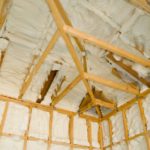Microwave-Assisted Organic Acids Extraction of Chromated Copper Arsenate (CCA)-Treated Southern Pine
Microwave-Assisted Organic Acids Extraction of Chromated Copper Arsenate (CCA)-Treated Southern Pine The extraction effects of acid concentration, reaction time and temperature in a microwave reactor on recovery of CCA-treated wood were evaluated. Extraction of copper, chromium, and arsenic metals from chromated copper arsenate (CCA)-treated southern pine wood samples with two different organic acids (i.e., acetic … [Read more…]




